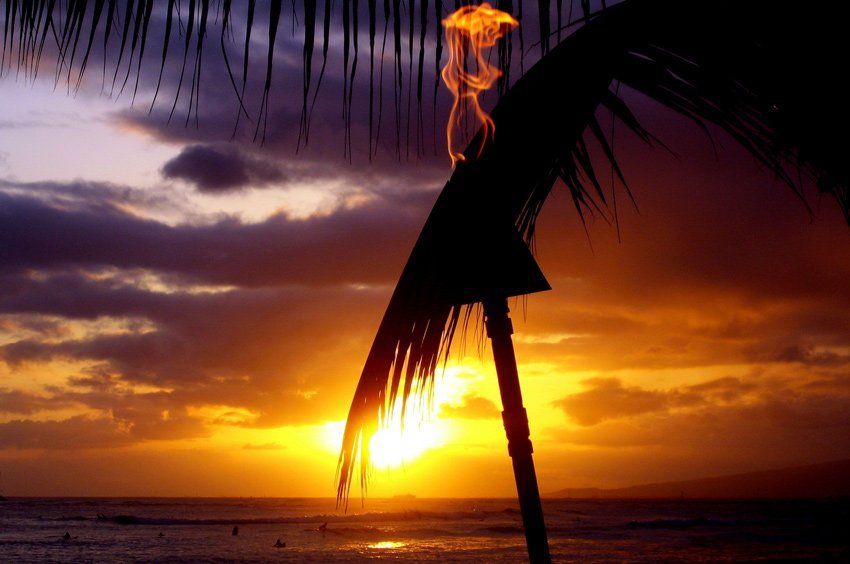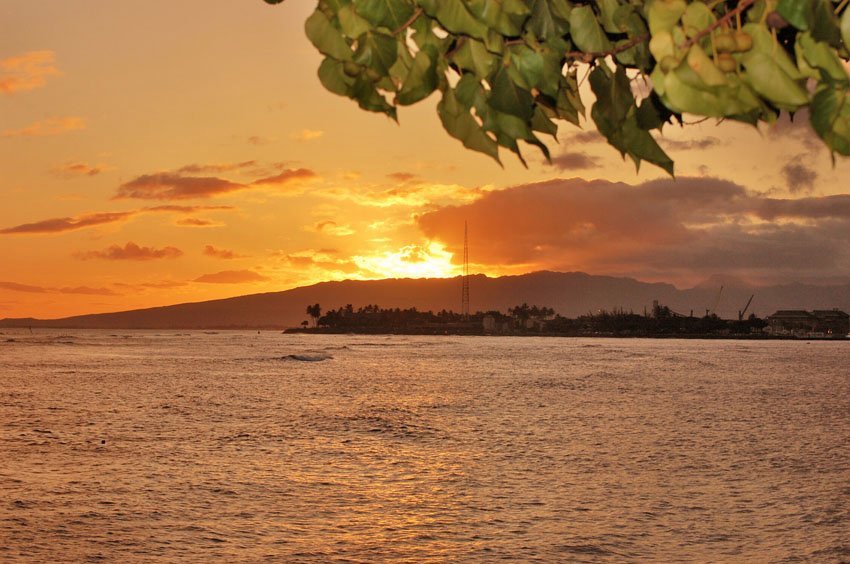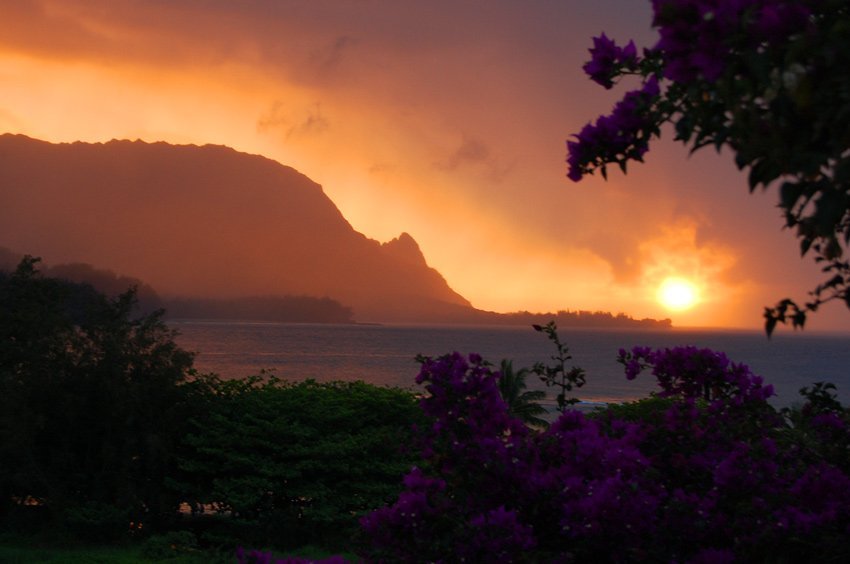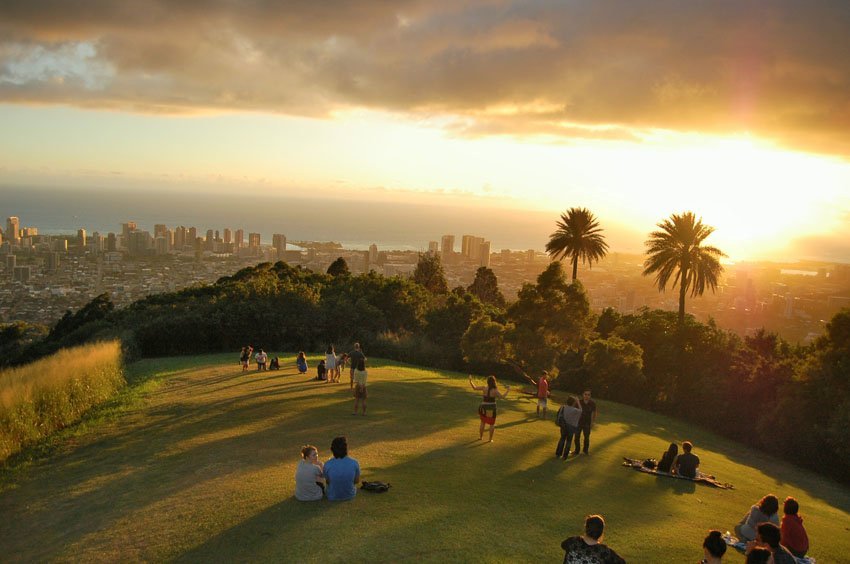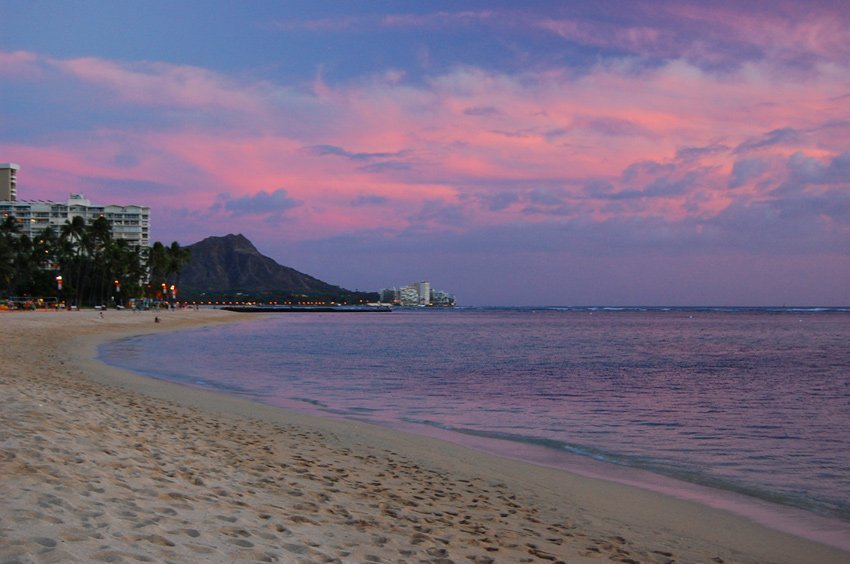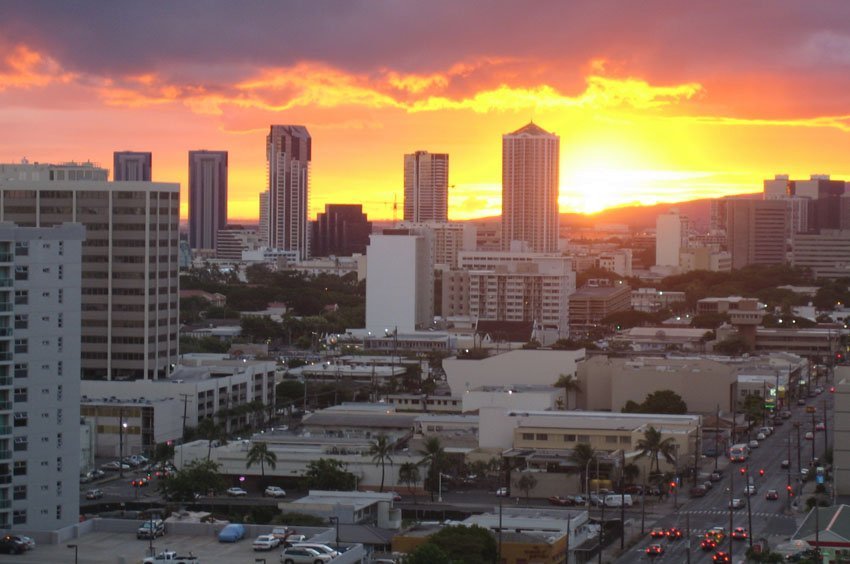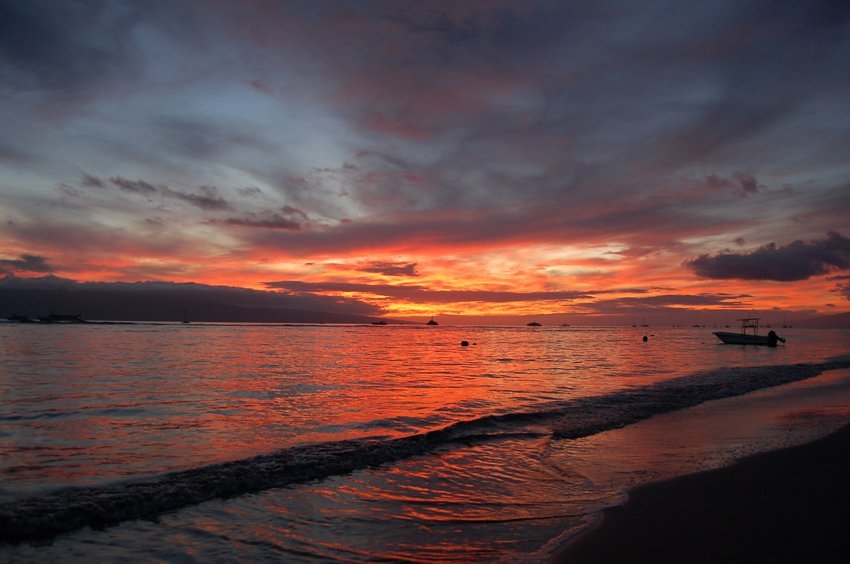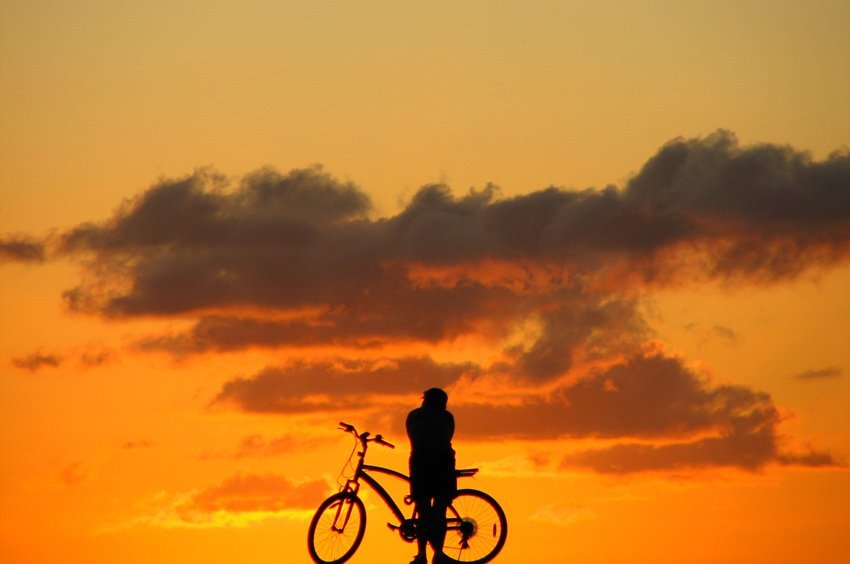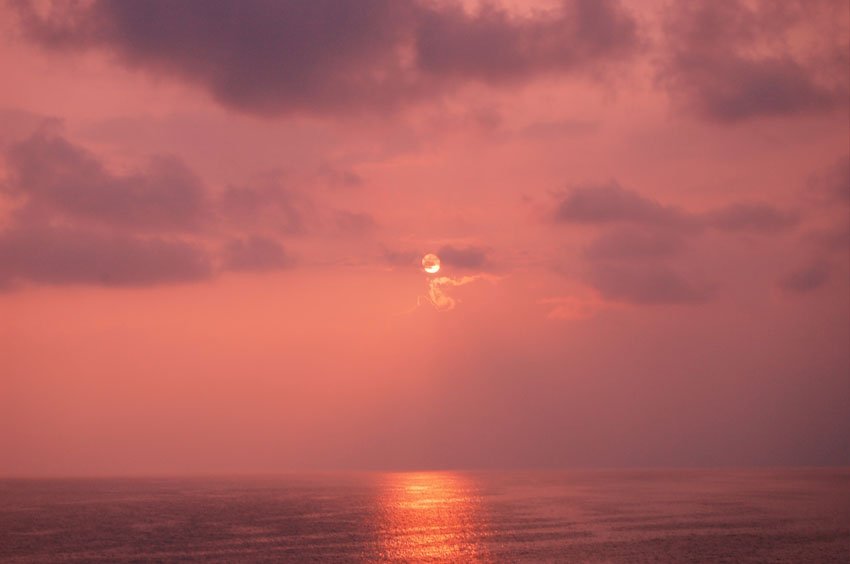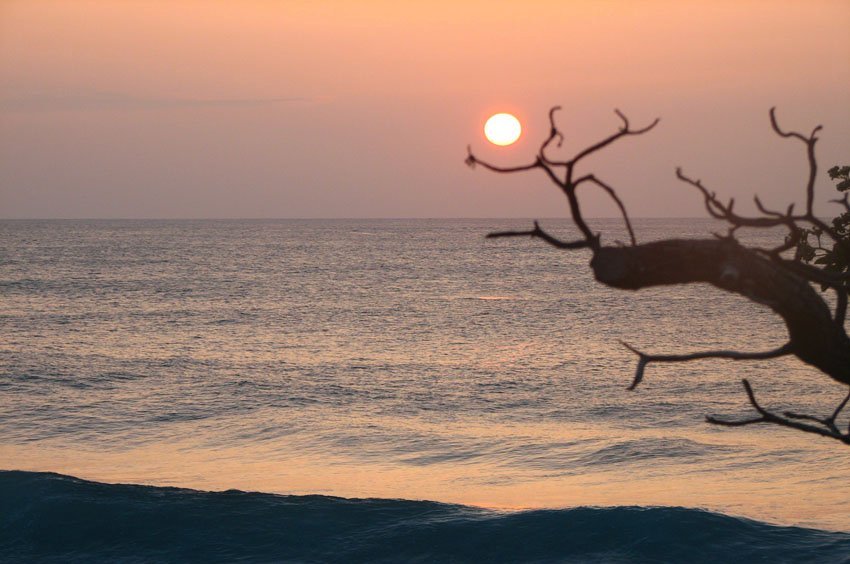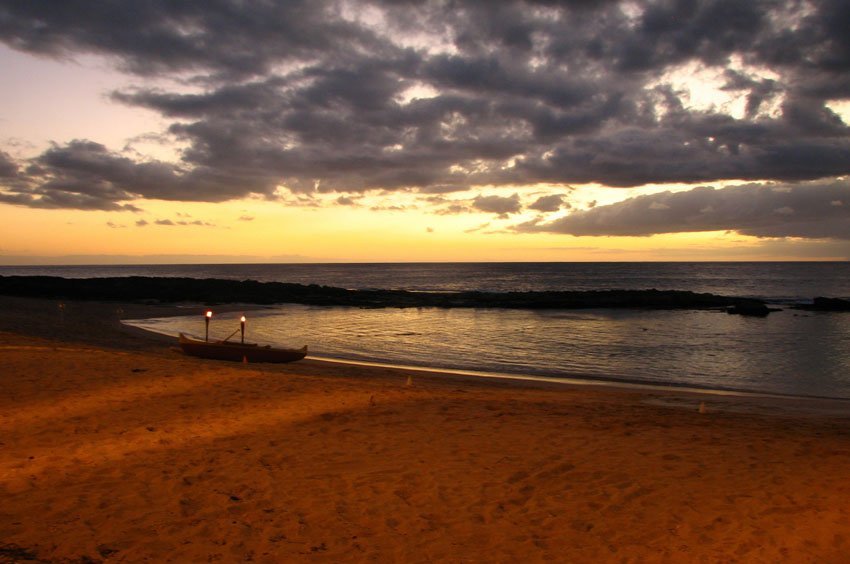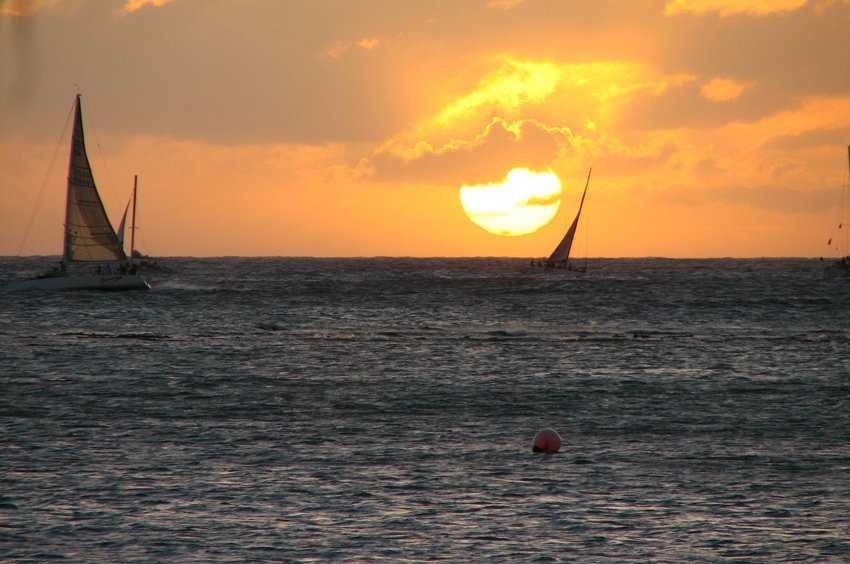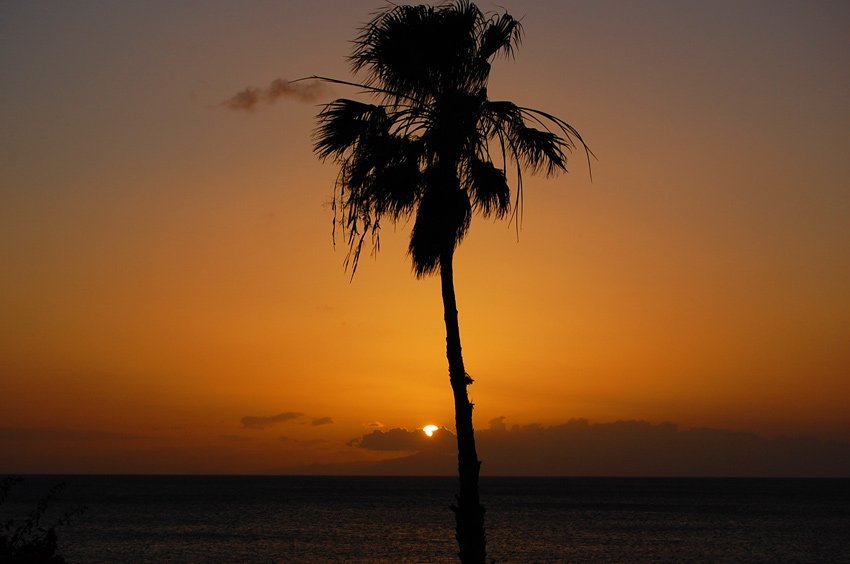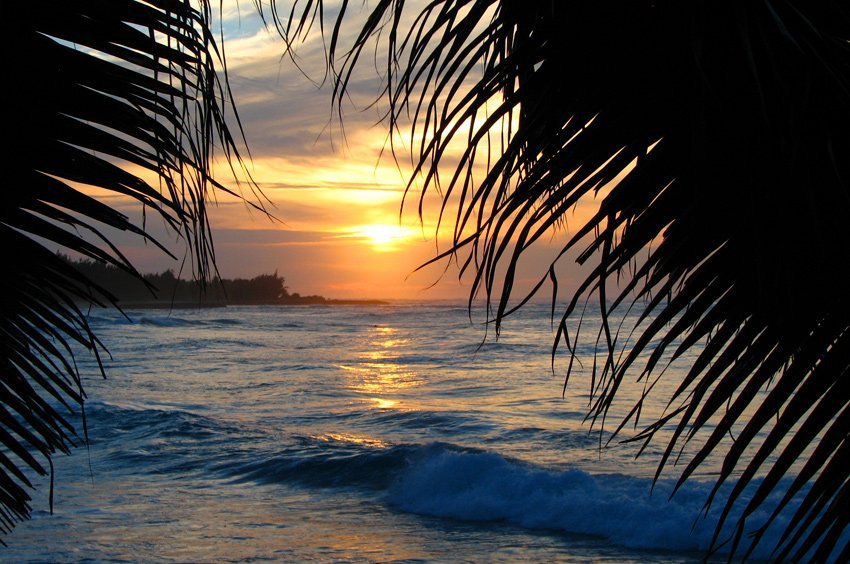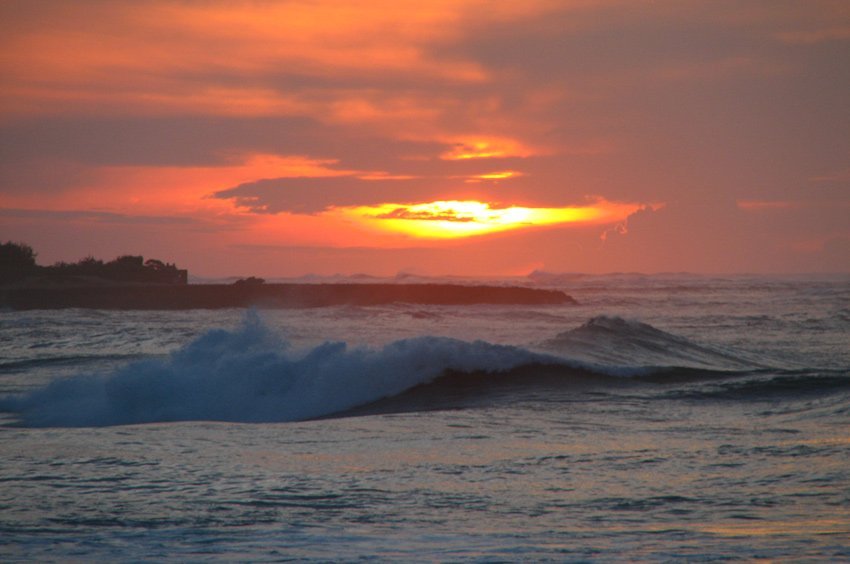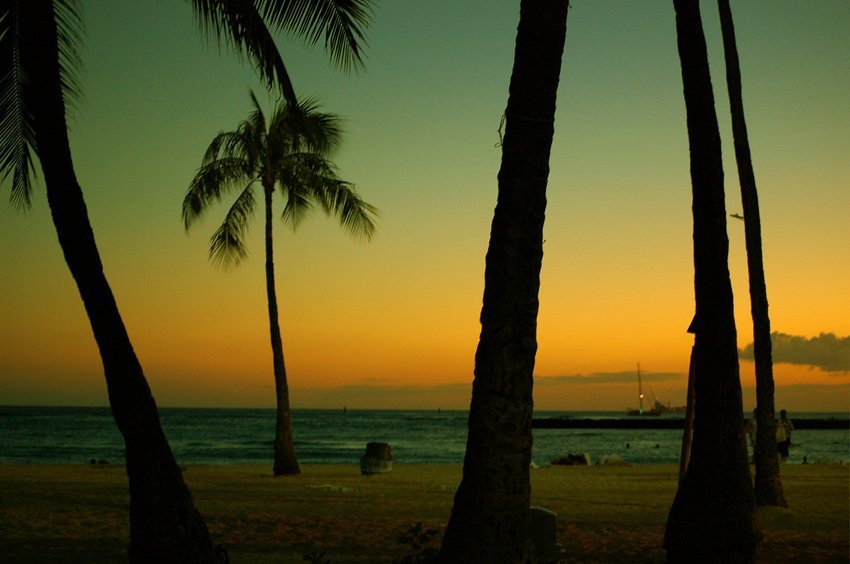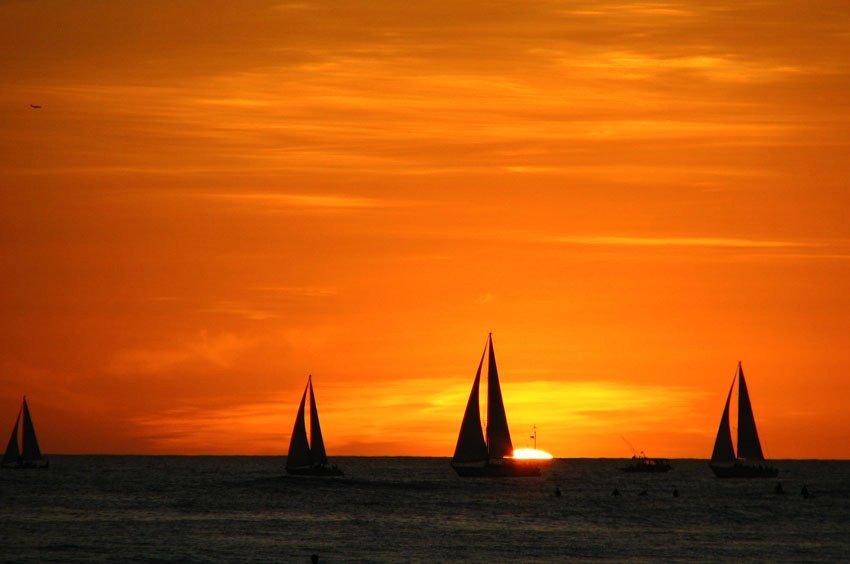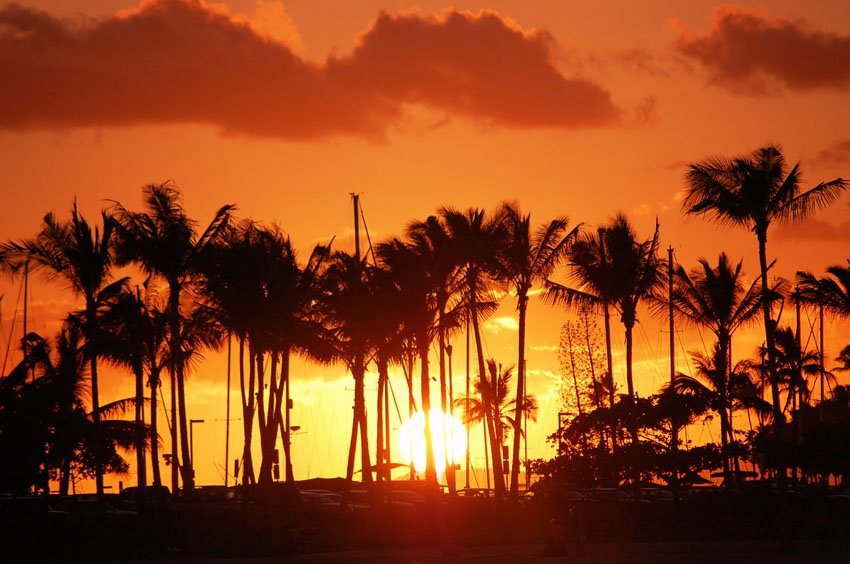Hawaiian Sunsets
Sunsets in Hawaii
The Hawaiian sunset - you've heard about it, you've seen photos of it, and now you can finally see for yourself what all the hype is about! A large part of Hawaii's spiritual draw can be attributed to its unique and inspirational sunset views. Gorgeous red, orange, pink and blue hues leave spectators in awe as the sun makes its way toward the horizon. The ubiquitous sunshine that provided 12 hours of life-giving light and beach and outdoor fun sinks peacefully into the sea as if being tucked in after a hard day's work.
Brilliant Colors
At the time of sunset, more light is piercing the atmosphere than at other times during the day. The heating process during the day has created a high number of particles in the air, which are able to scatter more light. We know that sunsets derive their red hues because the long wavelengths are the least scattered. The geography of Hawaii, tropical temperatures, humidity levels and a variety of other factors combine to give us the original palette we see as the sun sets.
Geography
Hawaii is in the northern hemisphere and is located 20° north of the equator and 155° west of the Prime Meridian. Due to Hawaii's remote geographic location, the view is truly unique. Sunset on the beach in Hawaii is a favorite pastime of residents and visitors, and the experience is like no other sunset you may have witnessed.
Speedy Sunsets
Sunset in Hawaii is anywhere from about 5:45 p.m. to 7:30 p.m. depending on the time of year. Once the sun seems low on the horizon, you should find your "sunset" spot quickly as it will set rapidly. When you see the sun nearing the horizon, it will surely disappear within a half hour. Look away and you might miss something! Twilight is also relatively short in Hawaii. After the sun disappears, you may only have 15 or fewer minutes of residual light.
The Green Flash
You may have heard of the sunset phenomenon called the "green flash." At the precise moment the sun disappears from view and is seemingly engulfed in whole by the ocean, a fleeting spot of intense emerald greenish/bluish light can be seen in its wake. The green flash is caused by the same phenomenon responsible for the plentiful rainbows in the islands, a process called dispersion whereby the sunlight is bent at varying angles and intensities based on its hue.
Green is the hue that is bent most, allowing spectators to view an intensity of green immediately following sunset. The green flash may also appear a moment before sunrise. If you are trying to view the green flash, pick an evening when the sky is cloudless. The flash happens so quickly it is nearly impossible to catch the event on film.
Prime Sunset Views
You may have heard of Oahu's famous North Shore beach, aptly named for the amazing color palette painted at dusk. The pier near the Honolulu yacht harbor, Waikiki Beach, Ala Moana Beach and Magic Island are also great places to catch a Hawaiian sunset in the winter season from mid-September to March. For other islands, choose a west-facing shore where the view is not impeded by close islands.
If you haven't had the privilege of experiencing a Hawaiian sunset yet, you can look forward to viewing the beautiful and inspiring warm colors that paint the Hawaii evening sky. Not content with a calm and peaceful beach sunset view? Try a sunset paddle in a canoe or kayak, a sunset dinner or cocktail cruise, or a sunset helicopter tour.




















